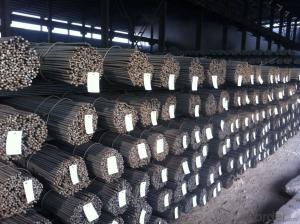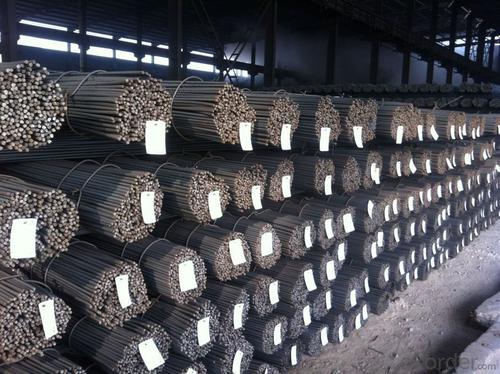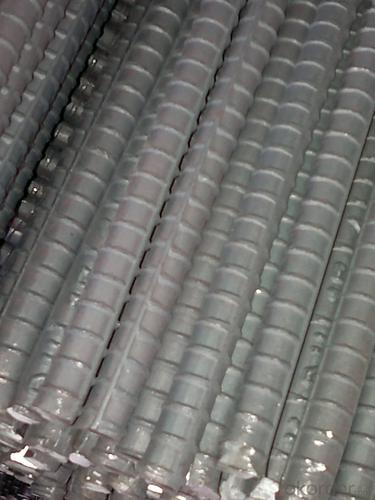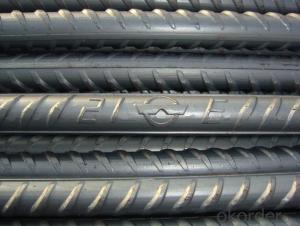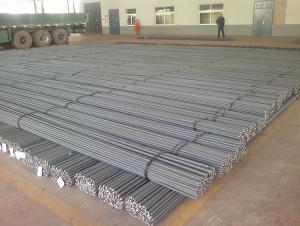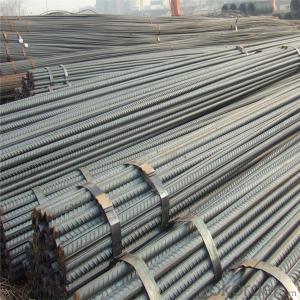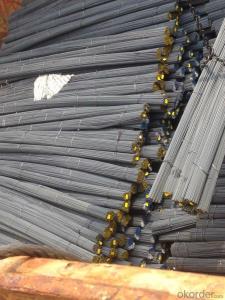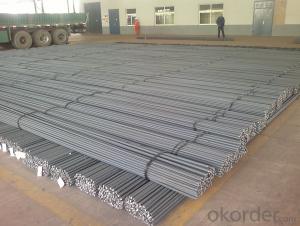Deformed Steel Rebars for Construction Concrete
- Loading Port:
- China main port
- Payment Terms:
- TT OR LC
- Min Order Qty:
- 100 m.t.
- Supply Capability:
- 10000 m.t./month
OKorder Service Pledge
OKorder Financial Service
You Might Also Like
Product Description:
OKorder is offering Deformed Steel Rebars for Construction Concrete at great prices with worldwide shipping. Our supplier is a world-class manufacturer of steel, with our products utilized the world over. OKorder annually supplies products to African, South American and Asian markets. We provide quotations within 24 hours of receiving an inquiry and guarantee competitive prices.
Product Applications:
Deformed Steel Rebars for Construction Concrete are ideal for structural applications and are widely used in the construction of buildings and bridges, and the manufacturing, petrochemical, and transportation industries.
Product Advantages:
OKorder's Deformed Steel Rebars for Construction Concrete are durable, strong, and wide variety of sizes.
Main Product Features:
· Premium quality
· Prompt delivery & seaworthy packing (30 days after receiving deposit)
· Can be recycled and reused
· Mill test certification
· Professional Service
· Competitive pricing
Product Specifications:
Manufacture: Hot rolled
Grade: HRB335,HRB400,HRB500
Certificates: ISO, SGS, BV, CIQ
Length: 6m – 12m, as per customer request
Packaging: Export packing, nude packing, bundled
Deformed Steel Bar | ||
Diameter (MM) | Cross Sectional Area (MM2) | Theorectical Weight (KG/M) |
6 | 28.27 | 0.222 |
8 | 50.27 | 0.395 |
10 | 78.54 | 0.617 |
12 | 113.1 | 0.888 |
14 | 153.9 | 1.21 |
16 | 201.1 | 1.58 |
18 | 254.5 | 2 |
20 | 314.2 | 2.47 |
22 | 380.1 | 2.98 |
25 | 490.9 | 3.85 |
28 | 615.8 | 4.83 |
32 | 804.2 | 6.31 |
36 | 1018 | 7.99 |
40 | 1257 | 9.87 |
FAQ:
Q1: Why buy Materials & Equipment from OKorder.com?
A1: All products offered byOKorder.com are carefully selected from China's most reliable manufacturing enterprises. Through its ISO certifications, OKorder.com adheres to the highest standards and a commitment to supply chain safety and customer satisfaction.
Q2: How many tons of steel products could be loaded in containers?
A2: Usually the steel products are delivered by bulk vessel because of the large quantity and the freight. However, there are no bulk vessel enter some seaports so that we have to deliver the cargo by containers. The 6m steel product can be loaded in 20FT container, but the quantity is changed according to the size, usually from 18tons to 25tons.
Q3: How soon can we receive the product after purchase?
A3: Within three days of placing an order, we will arrange production. The normal sizes with the normal grade can be produced within one month. The specific shipping date is dependent upon international and government factors, the delivery to international main port about 45-60days.
Images:
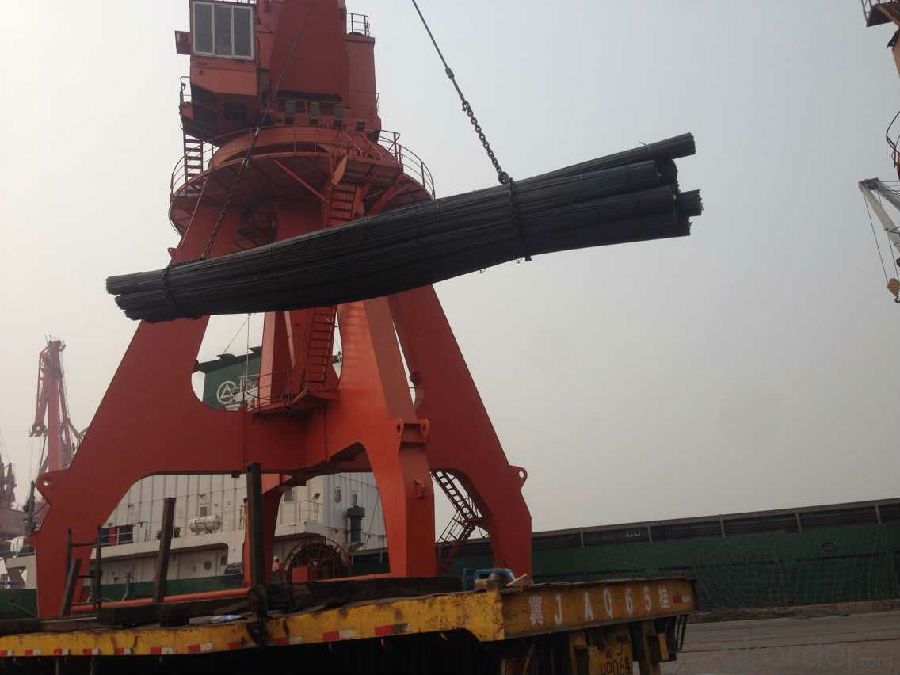
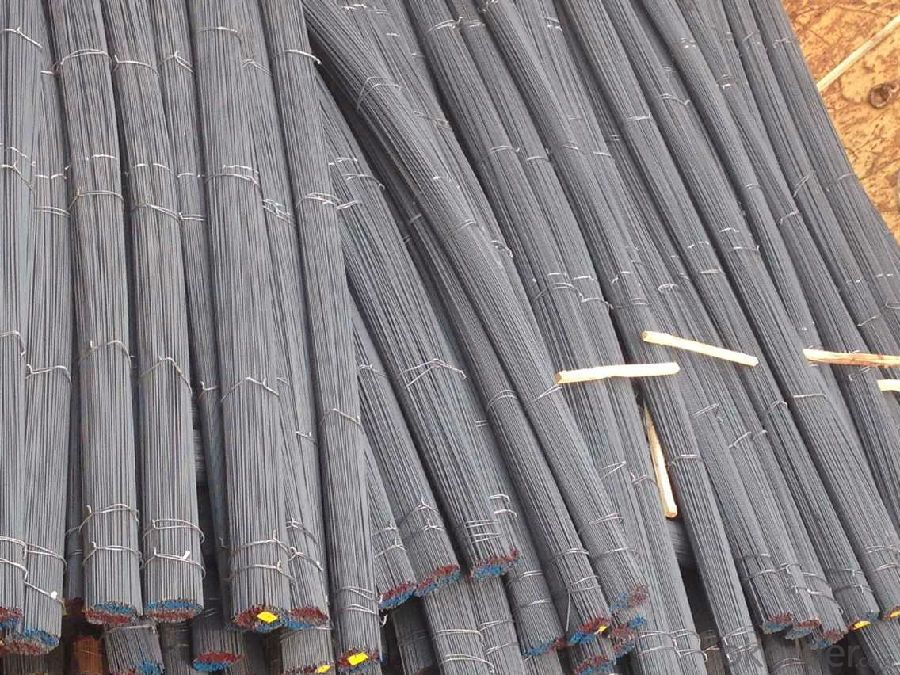
- Q: How are steel rebars cut and shaped on-site?
- Steel rebars are commonly cut and shaped on-site using various tools and techniques. The process typically involves the following steps: 1. Measurement: The rebars are first measured according to the required length and shape. This is done by using measuring tapes, rulers, or other measuring devices. 2. Marking: Once the measurements are taken, the rebars are marked at the appropriate points using chalk or a marker. These marks serve as guidelines for cutting and shaping the rebars accurately. 3. Cutting: The rebars are then cut along the marked lines using mechanical or hydraulic cutting tools. Some commonly used tools for cutting rebars include rebar cutters, angle grinders with cutting discs, or portable band saws. These tools are specifically designed to handle the high strength of steel rebars and ensure clean and precise cuts. 4. Shaping: After the rebars are cut to the desired lengths, they can be further shaped as needed. This shaping process involves bending the rebars into specific angles or curves. Manual rebar benders or electric rebar bending machines are commonly used for this purpose. These tools allow for accurate shaping of the rebars, ensuring they fit the required structural design. 5. Tying: Once the rebars are cut and shaped, they are often tied together using wire or rebar tying machines. This tying process helps to secure the rebars in place and maintain the desired positioning within the concrete structure. It is important to note that the cutting and shaping of rebars on-site require skilled workers who are trained in handling the tools and following proper safety precautions. These workers must also have a good understanding of the structural requirements and be able to interpret construction drawings to accurately cut and shape the rebars according to the project specifications.
- Q: How do steel rebars affect the overall weight of a construction project?
- Steel rebars can significantly impact the overall weight of a construction project. As reinforcing bars, or rebars, are typically made of steel, their inclusion in structures increases the weight of the project. By reinforcing concrete, rebars provide necessary strength and durability, enabling structures to withstand greater loads and forces. However, the added weight of steel rebars must be taken into account during the design and construction phases to ensure the overall stability and safety of the project.
- Q: What are the safety precautions to be taken while handling steel rebars?
- When handling steel rebars, there are several safety precautions that should be taken. These include wearing appropriate personal protective equipment (PPE) such as gloves, safety glasses, and steel-toed boots to protect against potential injuries. It is also essential to ensure proper lifting techniques are used to prevent strains or back injuries. Additionally, rebars should be properly stored and secured to avoid any hazards associated with falling or shifting materials. Regular inspections of the rebars for any damage or defects should be conducted, and any faulty or compromised rebars should be replaced immediately. Finally, it is crucial to follow all safety guidelines and protocols established by the employer or construction site to minimize any potential risks or accidents.
- Q: Can steel rebars be used in pre-stressed or post-tensioned concrete structures?
- Yes, steel rebars can be used in pre-stressed or post-tensioned concrete structures. In pre-stressed concrete, the rebars are tensioned before the concrete is poured, creating compression within the concrete to counteract external loads. In post-tensioned concrete, the rebars are tensioned after the concrete has set, providing additional strength and reducing cracking. Steel rebars are commonly used in both types of structures due to their high tensile strength and ability to withstand the stress induced by the pre-stressing or post-tensioning process.
- Q: How many patterns are there in threaded steel?
- Rebar is ribbed steel, ribbed steel, including rebar. A ribbed steel bar with 2 longitudinal ribs and uniformly distributed ribs along the length. The transverse rib shape is helical, herringbone, crescent 3. Because of the function of rib, it has better bonding ability with concrete, so it can bear the effect of external force better.
- Q: What are the different methods of reinforcing concrete with steel rebars?
- Steel rebars are commonly used to reinforce concrete in several different ways, each designed to improve the strength and longevity of the structure. Here are some of the methods employed: 1. Traditional Reinforcement: To reinforce concrete using this method, steel rebars are placed in a grid pattern within the concrete formwork prior to pouring. Both horizontal and vertical rebars are arranged to create a network of reinforcement throughout the structure. This technique is frequently utilized in large-scale concrete structures like buildings and bridges. 2. Post-Tensioning: This technique is employed in large structures requiring high tensile strength. After the concrete has been poured and hardened, steel rebars are placed in ducts or sleeves within the concrete and subsequently tensioned using hydraulic jacks. This process reduces tensile stresses in the concrete, making it more resistant to cracking and increasing its load-bearing capacity. 3. Pre-Tensioning: Similar to post-tensioning, pre-tensioning involves tensioning steel rebars before pouring the concrete. The rebars are placed in a precast concrete form and tensioned using hydraulic jacks. Once the concrete has hardened, the tensioned rebars transfer their force to the concrete, enhancing its strength and reducing the risk of cracking. 4. Welded Wire Mesh: Instead of individual rebars, this method employs a grid of welded steel wires to reinforce the concrete. The mesh, made of high-strength steel wires, is welded together at intersections. This technique is commonly used in smaller concrete structures like sidewalks, driveways, and patios. Welded wire mesh provides uniform reinforcement throughout the concrete, minimizing the risk of cracking. 5. Fiber Reinforced Concrete: Fiber reinforced concrete (FRC) involves adding small fibers made of materials like steel, glass, or synthetic polymers to the concrete mix. These fibers are distributed throughout the mix, improving its tensile strength and reducing the likelihood of cracking. FRC is often used in situations where traditional steel rebars are unsuitable, such as thin slabs, precast elements, or shotcrete. Overall, these diverse methods allow engineers and construction professionals to enhance the strength, durability, and performance of concrete structures. The choice of method depends on factors like the structure's size and type, required strength, and construction constraints. It is crucial to consider these factors and consult with engineering professionals to determine the most suitable method for each specific project.
- Q: Can steel rebars be used in parking structure construction?
- Using steel rebars in parking structure construction is a common practice. They provide strength and durability to reinforced concrete structures. The use of steel rebars is especially important in parking structures due to the heavy loads and traffic they experience. These rebars are typically placed in the concrete slabs, walls, and columns of the structure, improving its load-bearing capacity and resistance to compression, tension, and bending. Additionally, steel rebars can also reinforce ramps, driveways, and other areas that require extra support. Overall, incorporating steel rebars is crucial in parking structure construction to comply with safety standards and ensure the facility's longevity.
- Q: What is the process of anchoring steel rebars in concrete?
- The process of anchoring steel rebars in concrete involves several steps to ensure a strong and secure bond between the rebar and the concrete. First, the concrete surface where the rebar will be anchored needs to be prepared. This typically involves cleaning the surface to remove any dirt, dust, or debris that could interfere with the bonding process. It is also important to ensure that the concrete is fully cured and has reached the required strength before proceeding. Next, the rebar is cut to the desired length and shape according to the construction plans. It is important to follow the specified dimensions and placement requirements to ensure proper reinforcement and structural integrity. After the rebar is prepared, it is usually placed in the desired position within the concrete formwork. The rebar should be positioned at the correct depth and spacing as specified by the design. This is typically accomplished by using plastic or metal chairs, spacers, or tie wire to hold the rebar in place. Once the rebar is properly positioned, the next step is to secure it to the concrete. One common method of anchoring the rebar is by using mechanical anchors or rebar couplers. These devices are designed to create a strong connection between the rebar and the concrete by utilizing various mechanisms such as threading, crimping, or expansion. Alternatively, another method of anchoring the rebar is by using adhesive or cementitious grouts. These materials are applied to the rebar and then inserted into pre-drilled holes in the concrete. The adhesive or grout helps to bond the rebar to the concrete and provides additional reinforcement. Finally, after the rebar is anchored, the concrete is poured or placed around it. The concrete should be properly consolidated to ensure that it fully surrounds and encases the rebar. This can be achieved through techniques such as vibrating the concrete or using specialized equipment. Overall, the process of anchoring steel rebars in concrete involves careful planning, preparation, and execution to ensure a reliable and durable bond between the rebar and the concrete. Following industry standards and design specifications is crucial to achieve the desired structural strength and integrity.
- Q: What is the role of steel rebars in preventing concrete cracking?
- The reinforcement of concrete structures is greatly aided by the use of steel rebars. These rebars are essential in preventing cracks from forming in the concrete and in improving its overall durability and strength. Concrete has a tendency to crack when subjected to tensile stress due to its low tensile strength. However, when steel rebars are embedded within the concrete, they act as a reinforcement by absorbing and dispersing these tensile forces throughout the structure. The inclusion of steel rebars in concrete is effective in counteracting the natural inclination of concrete to crack under tension. When a load is applied to the concrete, the rebars bear a significant portion of the tensile stress, preventing it from being concentrated solely on the concrete itself. This distribution of forces helps minimize the development and spread of cracks, ensuring the structural integrity of the concrete. Furthermore, steel rebars also contribute to the overall strength and durability of concrete structures. The combination of steel's high tensile strength and concrete's compressive strength results in reinforced concrete, which provides exceptional resistance against various external forces, such as bending, shear, and seismic loads. This additional strength makes the concrete less prone to cracking and enhances its ability to withstand heavy loads and environmental factors over time. In conclusion, steel rebars play a critical role in preventing concrete cracking by providing reinforcement, absorbing and dispersing tensile forces, and improving the overall strength and durability of concrete structures. Their presence greatly enhances the structural integrity and longevity of concrete, making it a dependable and extensively used construction material.
- Q: Can steel rebars be bent without breaking?
- Yes, steel rebars can be bent without breaking, as they possess excellent flexibility and ductility. They are designed to withstand bending forces during construction processes, making them suitable for various applications in reinforced concrete structures.
Send your message to us
Deformed Steel Rebars for Construction Concrete
- Loading Port:
- China main port
- Payment Terms:
- TT OR LC
- Min Order Qty:
- 100 m.t.
- Supply Capability:
- 10000 m.t./month
OKorder Service Pledge
OKorder Financial Service
Similar products
Hot products
Hot Searches
Related keywords
